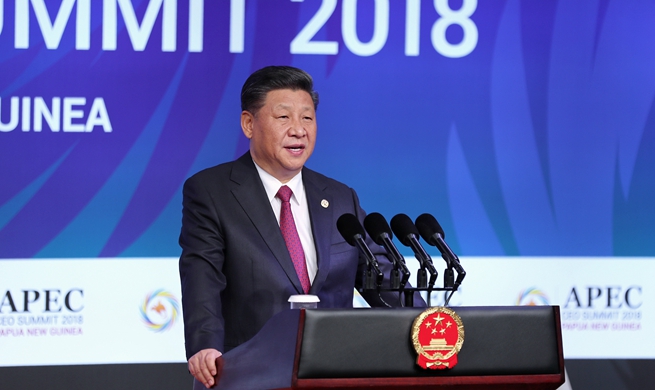by Xinhua writers Yuan Quan, Jing Huaiqiao
GUANGZHOU, Nov. 20 (Xinhua) -- Will your kids be short-sighted? A Chinese artificial intelligence (AI) model made from millions of eyesight records could help to predict whether they'll be needing glasses.
Myopia is the most common visual impairment in children. China has an unprecedented rate of nearsightedness. A recent World Health Organization report showed about 600 million Chinese, almost half the population, are short-sighted, including more than 70 percent of high school or college students and 40 percent of primary school children.
Current approaches to curb vision loss include eyedrops, glasses, contact lenses and surgery, which can be effective, but have side effects, such as higher recurrence rates, eye infections and other ailments.
If short-sightedness could be forecast, doctors could intervene with appropriate therapies to help reduce the risk of high myopia, which is measured by a focusing power at -6 diopters and above.
After analyzing 1.25 million eyesight records over three years, researchers from Zhongshan Ophthalmic Center of Sun Yat-sen University, have identified myopia development rules, and built an AI model to predict the condition in children and teenagers.
The study involved children aged 5 to 18 who had eyesight checks from 2005 to 2015 in eight of the largest ophthalmic centers in south China's Guangdong Province.
The researchers discovered that nearsightedness usually occurs at age 7, and rapidly develops before 10. It can grow to -3 diopters in the teenage years and up to -6 diopters in the 20s.
There were few cases of high myopia among school-age children, and researchers did not find the onset or development age of high myopia.
Researchers used age, the diopter and annual myopia progression rate as the main variables to develop an algorithm to predict myopia degrees over 10 years and the possibility of high myopia before 18 years.
To test the model, developers fed it about 687,000 eyesight records of more than 129,000 people.
The diagnostic accuracy was 90 percent within three years, and 80 percent within 10 years. It can also predict high myopia eight years in advance, providing a scientific basis for intervention, said study leader Liu Yizhi.
The research team made the AI model public this month and demonstrated how it works with the case of a 5-year-old boy who was nearsighted and began wearing glasses at -1 diopters last year.
After a researcher input two myopia records taken at least 12 months apart, within seconds the model showed that the boy's diopters might reach -3 diopter after 10 years, but he had little risk of high myopia.
High myopia usually progresses fast, and can cause blindness or other severe eye conditions, said Lin Haotian, first author of the study. It can also be associated with genes.
The risk of children developing high myopia is a great concern to Chinese parents, with thousands of students seeking care at hospital and ophthalmic clinics during school holidays.
The rise in myopia is partly driven by children spending more time reading, studying or glued to computer and smartphone screens.
Research indicates that effective intervention to curb worsening myopia is spending more time outdoors.
"Studies have proved that if children have an additional 40 minutes outside every day, the myopia rate will decrease by 23 percent in three years," said Liu.
The AI model can also help the limited number of specialists. By the end of 2014, China had just 36,000 ophthalmologists, with 70 percent in large cities.
Most doctors spend most of their time treating severe eye conditions, but little time on prevention and control of myopia.
"The AI model will help release the workload for doctors and improve diagnostic accuracy," said Liu.
Last year, Liu's team, and researchers from other universities, unveiled an AI system that diagnoses cataracts with high accuracy.
The myopia prediction model will soon be put into clinical use.
The study was published in the international journal PLOS Medicine.

















